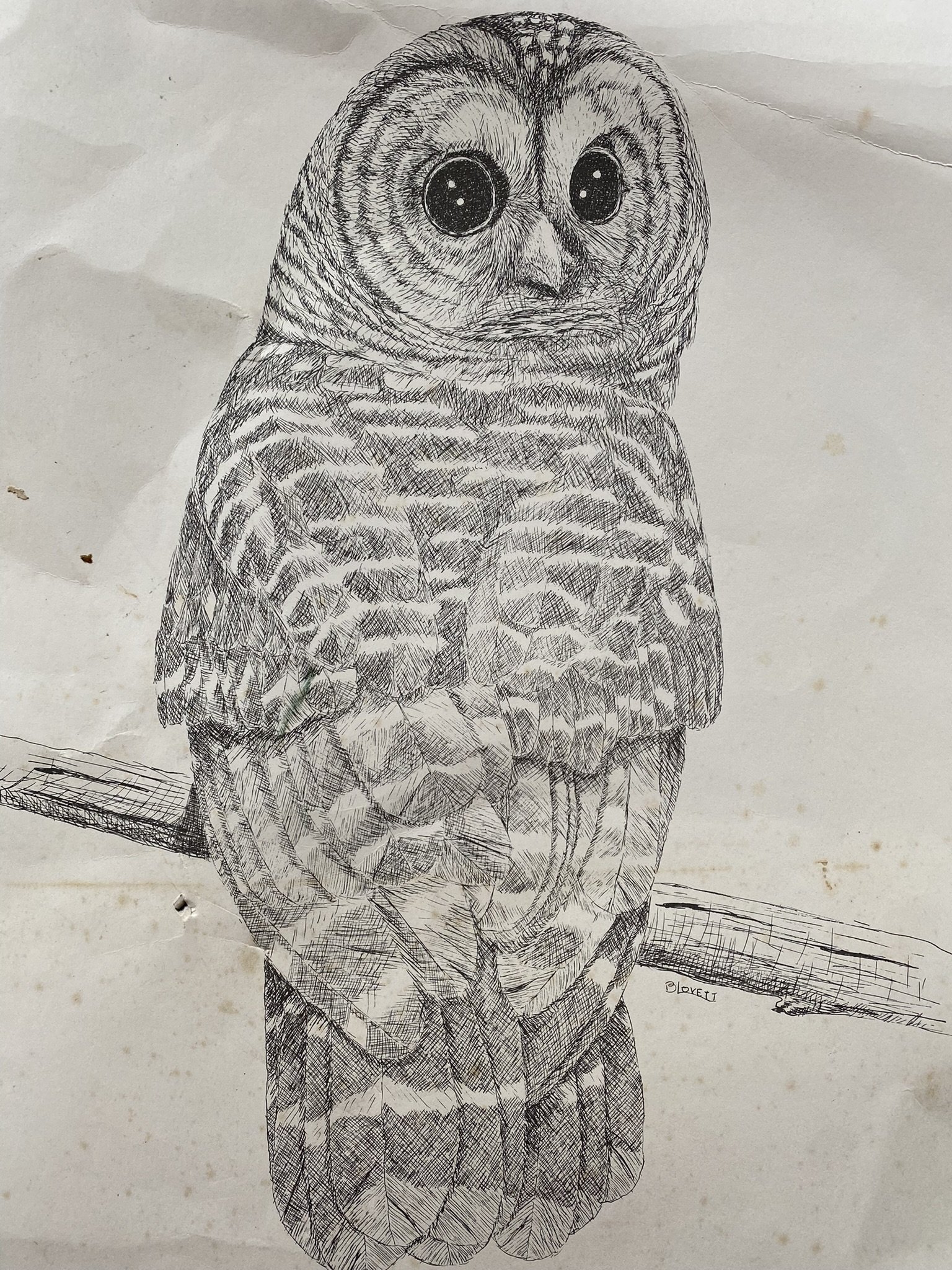Night owls
Of the 10 species of owl that breed in Michigan, the Barred Owl is one of the more commonly seen varieties in the Upper Peninsula.
April through mid May is peak time for the owl migration. The boreal, snowy, great gray and northern hawk-owl winter in the U.P. and return north for the summer. The northern saw-whet, great-horned, barred, log-eared and short-eared owls also breed here.
Mostly nocturnal, owls are heard but seldom seen. They are opportunistic predators that hunt after sunset, typically from a perch, and consume more rodent pests than any other animal!
I found this lovely pencil drawing of a Barred Owl that had likely been given to my parents decades ago, perhaps by a cabin guest.
The Barred Owl is a large raptor and one of the most vocally familiar. It has a large, rounded head and a pale face with faint, concentric markings and drab, barred plumage. Its large, dark eyes are close-set, with a pale yellow beak and feathered legs.
The Barred Owl has a wide repertoire of spectacular, far-reaching calls. The common call is the series of eight hoots that can be described mnemonically as hu hu hu hoo, hu hu hu huhoo. Other vocalizations include cackling, grumbling, screeching, and cat-like screams.
Barred owls mainly inhabit mature deciduous, coniferous, and mixed forests but also can be found in semi-open woodlands. They nest in hollow trunks of large trees in deep, wooded areas. Their sensitivity to logging and the destruction of old forests makes them an excellent indicator species.
Listen for these elusive birds. The owls speak to us at night, punctuating the darkness with their deep, haunting calls.

